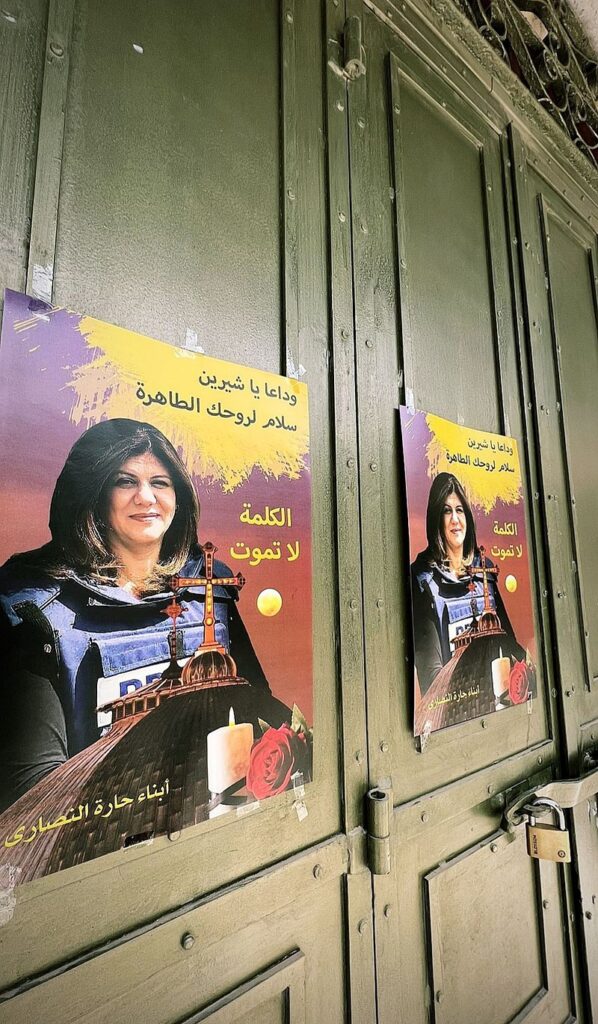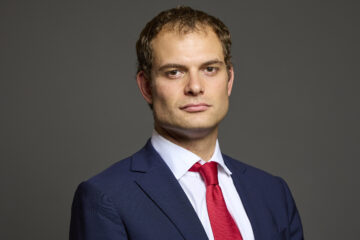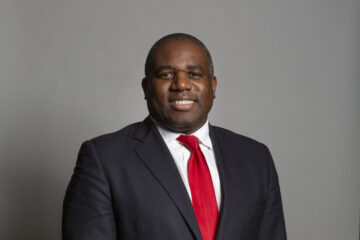Palestinians marked “Nakba Day” on Sunday – an annual commemoration of the “catastrophe” of the establishment of the State of Israel – amid high tensions following weeks of clashes at the Temple Mount/Al Aqsa compound and the killing of Al Jazeera journalist Shireen Abu Akleh last Wednesday.
What happened
- Thousands of Palestinians participated in rallies – which largely passed off without incident – staged to mark the 74th anniversary of the 1948 war and the establishment of a Jewish state.
- The Palestinian president, Mahmoud Abbas, delivered an uncompromising address in which he reiterated his determination to continue making controversial payments to terrorist prisoners and the families of “martyrs”.
- Israeli police faced heavy criticism after images of the funeral of Abu Akleh on Friday showed mourners being beaten with truncheons. Israel has launched an investigation into the policing of the event.
- Meanwhile, the IDF continues to probe the circumstances in which she was shot dead during an Israeli counter-terrorism operation in Jenin in the West Bank. Israel initially suggested Palestinian gunmen – who, video footage indicates, fired around 1,000 bullets towards the IDF – may have been responsible for Abu Akleh’s death, but that claim has been challenged by the Palestinian Authority, other journalists and independent researchers. Israel has now accepted that Abu Akleh may have been mistakenly killed by its forces as they came under “wild and indiscriminate” gunfire from Palestinian militants.
- The US secretary of state, Antony Blinken, said on Sunday that he had spoken to Abu Akleh’s family to express condolences and respect for her work “as well as the need to have an immediate and credible investigation” into her death.
“The voice of Palestine”
Abu Akleh – dubbed the “voice of Palestine” – had worked for Al Jazeera for 25 years, building a reputation for fairness and courage, and as symbol of a strong Palestinian woman across the Arab world.
Initial investigations inconclusive
Both the PA and Israel are investigating how Abu Akleh – who was wearing a flak jacket and helmet which identified her as press – came to be shot during the IDF raid in Jenin. The raid was part of ongoing operations in the West Bank by Israeli forces to stem a series of terror attacks which have killed 19 Israelis over the past two months. Both Abu Akleh’s employers – Qatar-based Al Jazeera – and Abbas have blamed Israel.
- Despite international pressure, the PA is refusing to hold a joint investigation with Israel. It has also refused to hand over the fatal bullet which killed Abu Akleh.
- The Israeli defence minister categorically denied that Abu Akleh had been deliberately targeted. “Our initial findings from our investigation cannot determine which gunfire hit Shireen and I cannot exclude anything because of the chaos on the ground,” Benny Gantz said. “I hope to get full cooperation from the Palestinians because without the pathological findings and the forensic findings it will be very hard to understand what happened.” The head of the centrist Blue and White party, a former IDF commander, added: “IDF troops would never intentionally harm members of the press, and any attempt to imply otherwise is baseless.”
- An initial autopsy by Palestinian coroners found that Abu Akleh was killed after a bullet, that was fired several metres away, struck her head. Dr Ryan al-Ali of the Pathological Institute at the a-Najah University in Nablus was quoted as saying that they could not determine who had shot her.
- An IDF investigation, launched soon after Abu Akleh’s death on Wednesday, presented its initial findings over the weekend, while admitting that – without the bullet – it could not reach a conclusion. “The first possibility is that there was massive gunfire from Palestinian armed men trying to hit IDF forces. During that attack, hundreds of bullets were fired from several locations indiscriminately,” the report suggested.
- The second possibility, it continued, was that “during the fighting, one of the fighters fired several bullets through a special opening in the jeep and through a telescopic sight at a terrorist who fired at the vehicle. The reporter may have been standing next to or behind the armed terrorist and she was hit by IDF gunfire. The distance from the vehicle to the journalist was about 200 metres.”
- “Without the bullet, any investigation will only be able to reach partial and questionable conclusions,” Jonathan Conricus, a former Israeli military spokesman and expert on military affairs, told the Times of Israel. “One might assume that the strategy of the Palestinian Authority is exactly that: to deny Israel the ability to clear its name, while leveraging global sympathy for the Palestinian cause.”
Independent investigations
A Dutch-based international consortium of researchers, Bellingcat, has published the first of a number of independent investigations which commenced after last week’s events. Its analysis of open-source video and audio evidence gathered on social media came from both Palestinian and Israeli military sources. It examined such factors as time stamps, the locations of the videos, shadows and a forensic audio analysis of gunshots. Although Bellingcat researchers say that the absence of evidence – such as the bullet, weapons used by the army and the IDF’s GPS locations – made it impossible to reach conclusions with 100% certainty, it is clear that Palestinian gunmen and Israeli soldiers were both in the area where Abu Akleh was shot. “Based on what we were able to review, the IDF were in the closest position and had the clearest line of sight to Abu Akleh,” said Giancarlo Fiorella, the lead Bellingcat researcher, thus confirming some witness accounts. The Israeli human rights group, B’Tselem, also said it has begun gathering witness testimony. Its research showing that gunmen were some 300 metres away from where Abu Akleh was shot, separated by a series of walls and alleyways, led the IDF to row back on its initial claims that Palestinian militants may have inadvertently killed the journalist. However, B’Tselem says it hasn’t yet reached a conclusion as to who was responsible for the fatal shot.
“A shocking display”
- There were scenes of violence on Friday when Abu Akleh’s casket was being moved from St Joseph’s hospital in Jerusalem to a nearby Catholic Church in the Old City, as part of its journey from the Sheikh Jarrah neighbourhood to Mount Zion. More than 10,000 Palestinians gathered in the city to pay their respects to the veteran journalist.
- Israeli police later claimed that “300 rioters” had attempted to seize the coffin outside the hospital and sought to carry it on foot to the Old City rather than allowing it to be transported by a hearse, as the family allegedly wished. Police also said Palestinians hurled objects at them.
- Footage from the scene showed police striking mourners carrying the coffin with batons and firing stun games, which nearly led to the casket being dropped.
- Abu Akleh’s brother accused the police of using “extreme, vicious and brutal force” outside the hospital, claiming that officers’ accounts were “illogical and untrue”.
- The most senior Catholic clergyman in Israel, Latin Patriarch Pierbattista Pizzaballa, said on Monday that police had used “disproportionate” force and its actions were “a severe violation of international norms and regulations”.
- The Israeli media on Sunday featured strong criticism of the police. “The footage from Friday is the very opposite of good judgment and patience,” commentator Oded Shalom argued in Yedioth Ahronoth. “It documented a shocking display of unbridled brutality and violence.”
- In Haaretz, Nir Hasson suggested: “This was one of the most extreme visual expressions of the occupation and the humiliation the Palestinian people’s experience.”
Remembrance and protest
Despite the high tensions, “Nakba Day” passed off largely without incident, although the arrest of a 22-year-old Palestinian carrying an axe and a suicide note underlined the continuing threat of terror attacks.
- Thousands of Palestinians gathered peacefully in Ramallah to mark “Nakba Day”. There were no reported disturbances at the Temple Mount, which is, once again, open to Muslim and non-Muslim visitors.
- There were, however, three arrests at Tel Aviv University, where Palestinian students – claiming the university was constructed on the site of the former Palestinian village of Sheik Munis – clashed with Jewish students holding a counter-demonstration.
- Nine Palestinians were arrested on Sunday evening during continuing counter-terrorism operations in the West Bank.
- A 22-year-old resident of the Palestinian city of Al-Bireh was taken in for questioning after driving around the Tapuah Junction in the northern West Bank for nearly an hour looking for Israelis standing alone in order to attack them. He was carrying an axe and a suicide note.
Abbas takes a firm stand
In his address to mark “Nakba Day”, the Palestinian president adopted a hardline stance. Abbas vowed to continue the “pay for slay” policy, by which the PA pays salaries to prisoners serving time in Israeli prisons for terrorist offences, while also making payments to the families of “martyrs”. He also pledged not to row back on the Palestinians’ historic claim of a “right to return” under which the descendants of refugees who left the new Jewish homeland in 1948 would be allowed to return to their relatives’ former homes in Israel even after the establishment of an independent Palestinian state. Ahmed Abu Holy, head of the PLO’s refugee department, added that the Palestinians would not accept “partial solutions” to the problem of the refugees. In its “Nakba Day” statement, Hamas said Israel has “no legitimacy or sovereignty … over one inch of the land of historic Palestine”. “Our people will remain committed to Jerusalem, the eternal capital of Palestine, from the [Jordan] river to the [Mediterranean] sea,” it said.
What next
Continuing doubts about the long-term stability of the Israeli government; the battle to succeed Abbas; and the division of the Palestinian territories between Hamas-dominated Gaza and the Fatah-led West Bank provide an inauspicious backdrop as a series of contentious and symbolic dates – including Jerusalem Day on 29 May and the anniversaries of the Six Day War, the First Lebanon War and Hamas’ coup in Gaza in early June – loom over the next few weeks.



